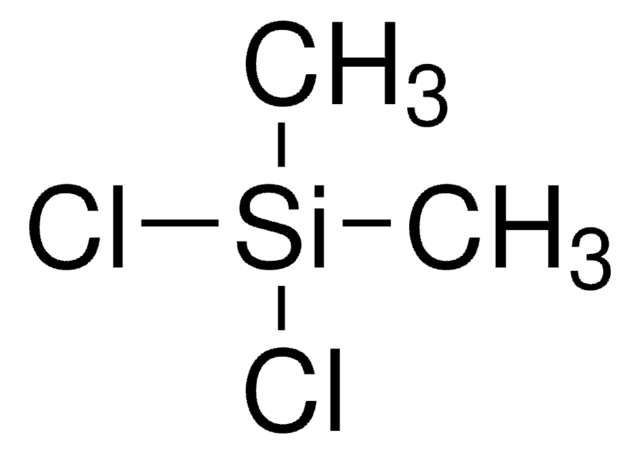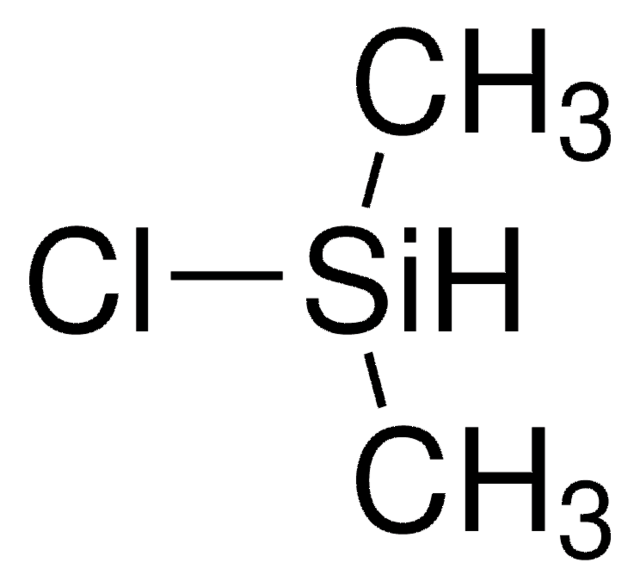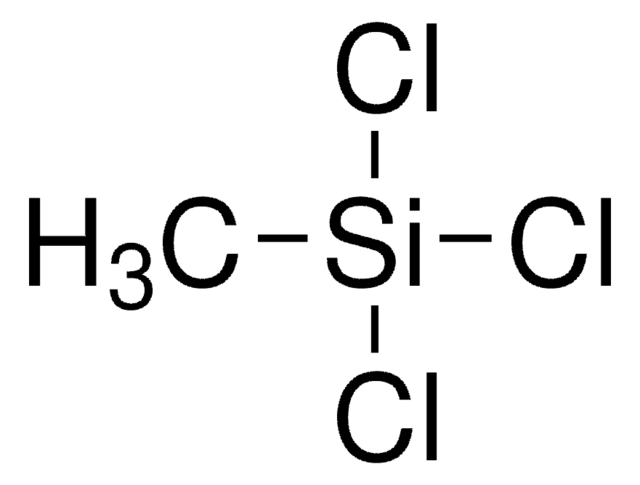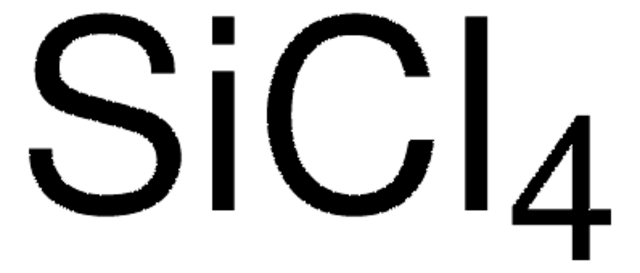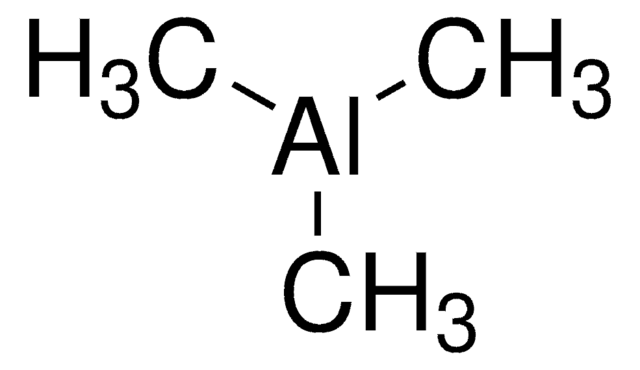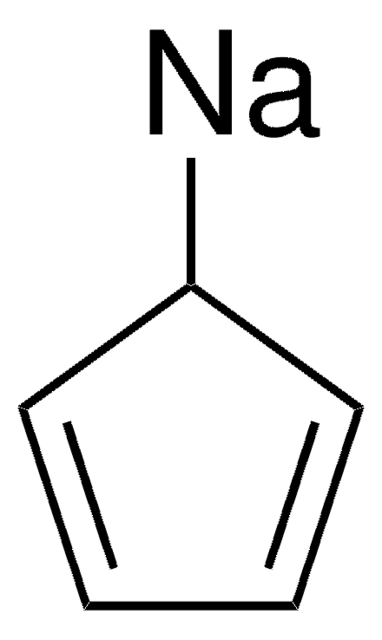440248
Dichloromethylsilane
≥97%
Sinonimo/i:
Methyldichlorosilane
About This Item
Prodotti consigliati
Densità del vapore
4 (vs air)
Livello qualitativo
Tensione di vapore
6.79 psi ( 20 °C)
Saggio
≥97%
Forma fisica
liquid
Temp. autoaccensione
471 °F
Limite di esplosione
>55 %
Indice di rifrazione
n20/D 1.398 (lit.)
P. eboll.
41 °C (lit.)
Punto di fusione
−93 °C (lit.)
Densità
1.105 g/mL at 25 °C (lit.)
Temperatura di conservazione
2-8°C
Stringa SMILE
C[SiH](Cl)Cl
InChI
1S/CH4Cl2Si/c1-4(2)3/h4H,1H3
NWKBSEBOBPHMKL-UHFFFAOYSA-N
Cerchi prodotti simili? Visita Guida al confronto tra prodotti
Categorie correlate
Descrizione generale
Applicazioni
- A General and Selective Synthesis of Methylmonochlorosilanes from Di-, Tri-, and Tetrachlorosilanes - Discusses a method for synthesizing Methylmonochlorosilanes, showing potential for varied applications in chemical synthesis (Y Naganawa et al., 2020).
- Polymerization of methylsilylenes into polymethylsilanes or polycarbosilanes after dechlorination of dichloromethylsilanes. - Investigates the polymerization of methylsilylenes, offering insights into the production of polymethylsilanes or polycarbosilanes from Dichloromethylsilanes (Y Tian et al., 2016).
- Synthesis of low viscosity of polymethylhydrosiloxane using monomer of dichloromethylsilane - Focuses on producing low-viscosity polymethylhydrosiloxane through hydrolysis-condensation of Dichloromethylsilane, significant for various industrial applications (VF Arini et al., 2022).
Confezionamento
Avvertenze
Danger
Indicazioni di pericolo
Classi di pericolo
Acute Tox. 3 Inhalation - Acute Tox. 3 Oral - Eye Dam. 1 - Flam. Liq. 2 - Skin Corr. 1A - Water-react 3
Rischi supp
Codice della classe di stoccaggio
4.3 - Hazardous materials which set free flammable gases upon contact with water
Classe di pericolosità dell'acqua (WGK)
WGK 1
Punto d’infiammabilità (°F)
-18.4 °F
Punto d’infiammabilità (°C)
-28 °C
Dispositivi di protezione individuale
Faceshields, Gloves, Goggles
Scegli una delle versioni più recenti:
Possiedi già questo prodotto?
I documenti relativi ai prodotti acquistati recentemente sono disponibili nell’Archivio dei documenti.
I clienti hanno visto anche
Il team dei nostri ricercatori vanta grande esperienza in tutte le aree della ricerca quali Life Science, scienza dei materiali, sintesi chimica, cromatografia, discipline analitiche, ecc..
Contatta l'Assistenza Tecnica.